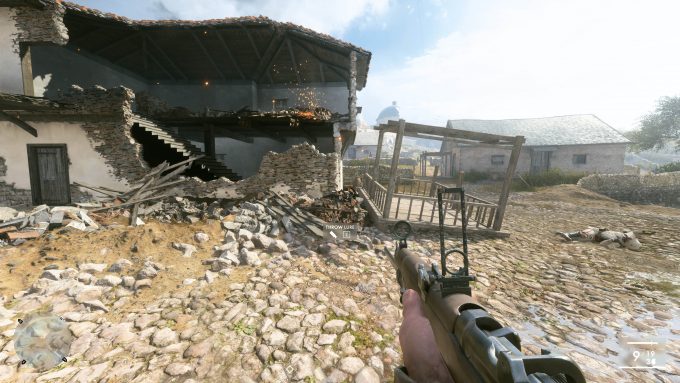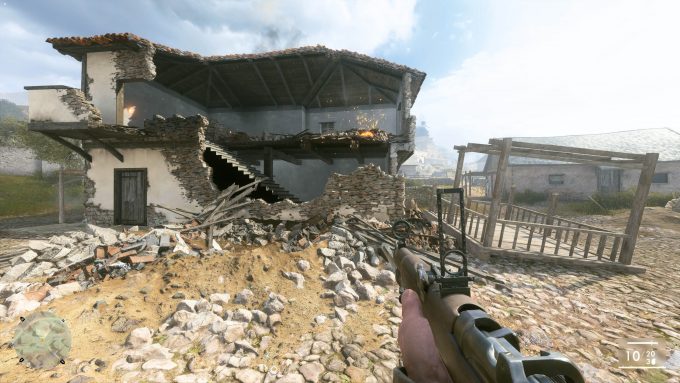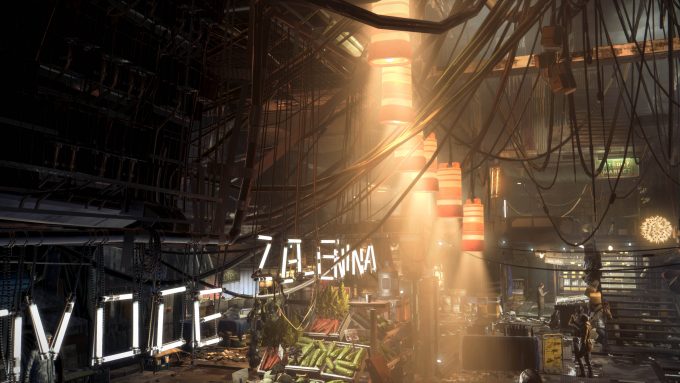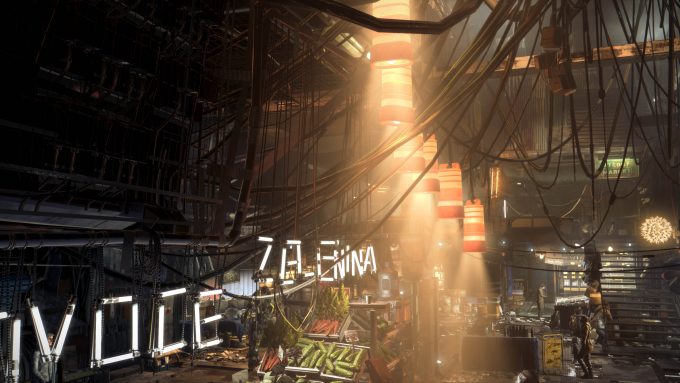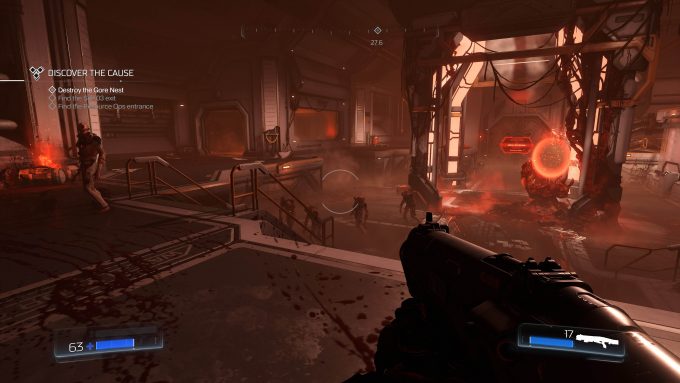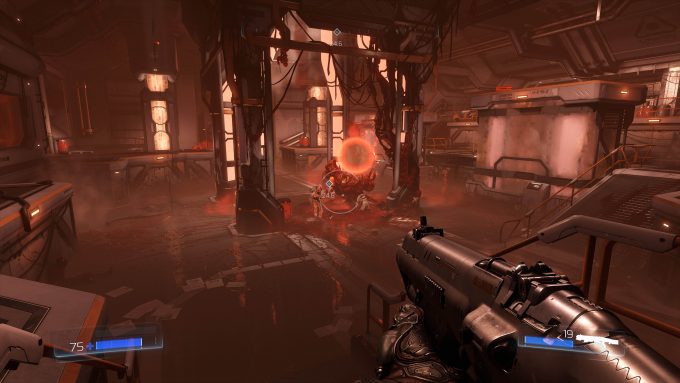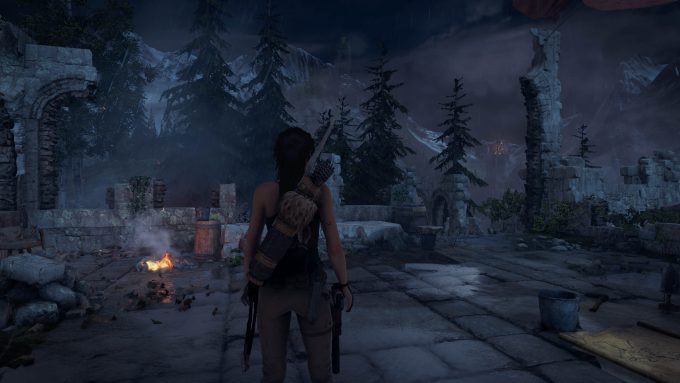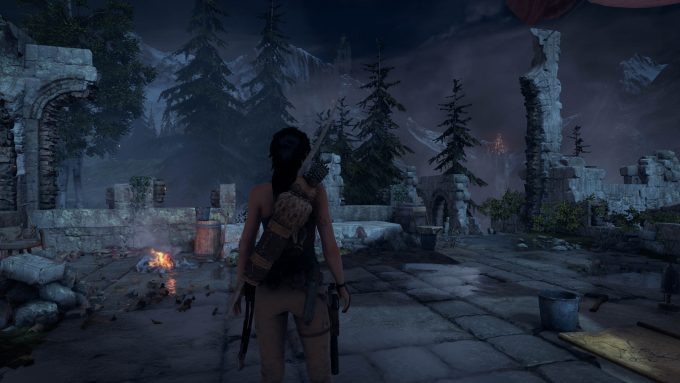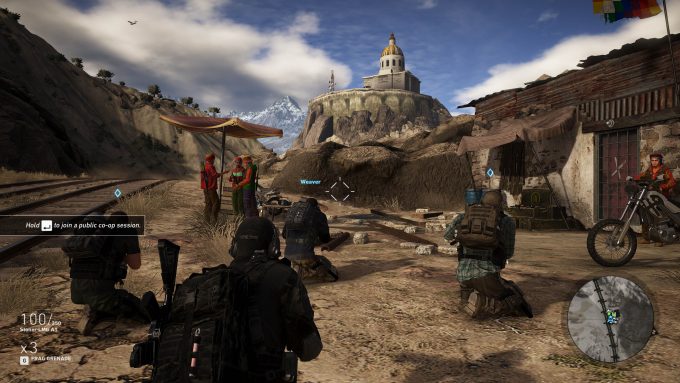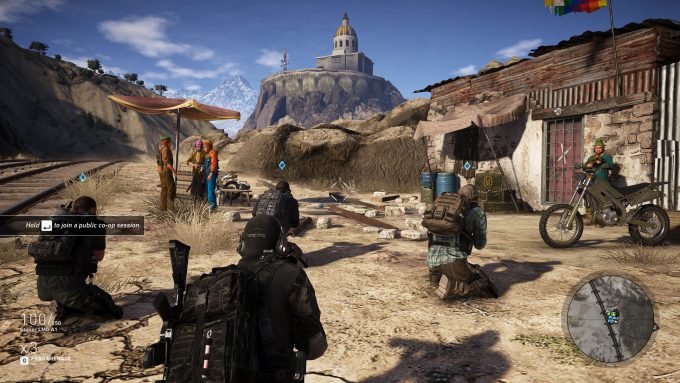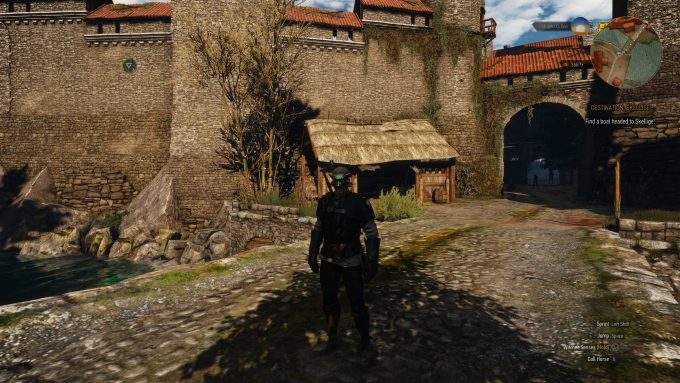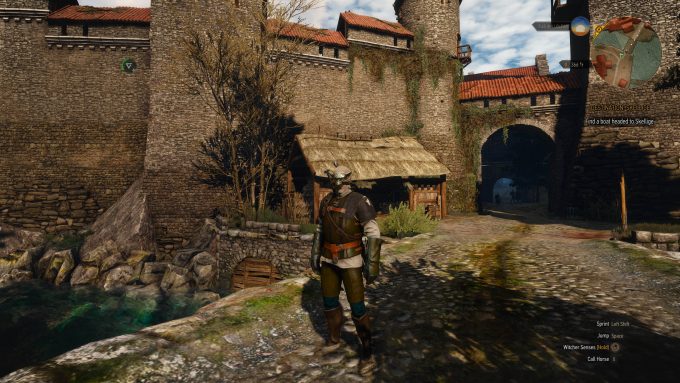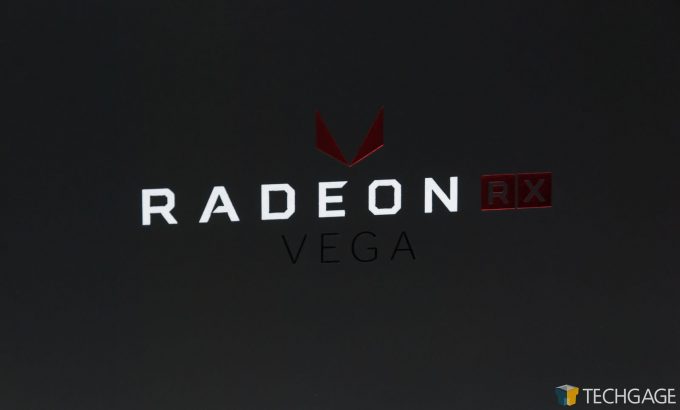- Qualcomm Launches Snapdragon 4 Gen 2 Mobile Platform
- AMD Launches Ryzen PRO 7000 Series Mobile & Desktop Platform
- Intel Launches Sleek Single-Slot Arc Pro A60 Workstation Graphics Card
- NVIDIA Announces Latest Ada Lovelace Additions: GeForce RTX 4060 Ti & RTX 4060
- Maxon Redshift With AMD Radeon GPU Rendering Support Now Available
AMD Radeon RX Vega 64 & 56 Best Playable Settings At 4K & Ultrawide

We’ve taken a look at AMD’s latest top-end Radeon in workstation and compute scenarios, and now, the attention is turned to gaming. In this Vega review follow-up, we’re going to look at the “Best Playable” settings for both the Vega 64 and GTX 1080 at 4K, as well as ultrawide, adding Vega 56 and GTX 1070 to the mix.
Page 3 – Best Playable @ 3840×2160 – RX Vega 64 & GTX 1080
As I mentioned on the first page of this article, 4K resolution is not an ideal target if either AMD’s Radeon RX Vega 64 or NVIDIA’s GeForce GTX 1080 are in your sights. 4K is quite literally four times the number of pixels as 1080p, so given that, and also the fact that games continue to become more advanced, it’s really, really hard (or at least expensive) to get playable framerates at 4K while retaining good detail levels.
If you’re to pick up either of these GPUs, you need to go into 4K with the expectation that 60 FPS is just not going to happen. That’s unless you’re typically fine with reducing graphics detail, but that wouldn’t align with the goals behind going with 4K in the first place. People generally don’t care if awful graphics are crisp.
That all being said… let’s see what we can muster.
Battlefield 1
| Battlefield 1 (DX11) – RX Vega 64 | |||
| Minimum | Average | ||
| 43 | 52 | ||
| Resolution: | 3840 x 2160 | Texture Quality: | High |
| Texture Filtering: | High | Lighting Quality: | High |
| Effects Quality: | High | Post Process Quality: | High |
| Mesh Quality: | High | Terrain Quality: | High |
| Undergrowth Quality: | High | Antialiasing Post: | TAA |
| Ambient Occlusion: | HBAO | ||
| Battlefield 1 (DX11) – GTX 1080 | |||
| Minimum | Average | ||
| 42 | 50 | ||
| Resolution: | 3840 x 2160 | Texture Quality: | High |
| Texture Filtering: | High | Lighting Quality: | High |
| Effects Quality: | High | Post Process Quality: | High |
| Mesh Quality: | High | Terrain Quality: | High |
| Undergrowth Quality: | High | Antialiasing Post: | TAA |
| Ambient Occlusion: | HBAO | ||
Both the Vega 64 and GTX 1080 used the same detail levels, and performed about the same. But that said, ~50 FPS might be suitable for single-player, but it probably isn’t for online play (where performance is impacted even more, generally), so if you really want 60+, prepare to spend some time tweaking. Fortunately, the game’s settings are not too complex, so getting to your sweet spot quickly shouldn’t be too difficult.
Deus Ex: Mankind Divided
| Deus Ex: Mankind Divided (DX12) – RX Vega 64 | |||
| Minimum | Average | ||
| 39 | 49 | ||
| Resolution: | 3840 x 2160 | Anti-Aliasing: | Off |
| Texture Quality: | High | Anisotropic Filter: | 16x |
| Shadow Quality: | High | Ambient Occlusion: | Off |
| CH Shadows: | Off | Parallax Occlusion: | Off |
| Depth of Field: | Off | Level of Detail: | High |
| Volumetric Lighting | Off | SS Reflections: | Off |
| Temporal AA: | On | Motion Blur: | Off |
| Sharpen: | Off | Bloom: | On |
| Lens Flares: | Off | Cloth Physics: | Off |
| Subsurface Scattering: | Off | Chromatic Aberration: | On |
| Tessellation: | On | ||
| Deus Ex: Mankind Divided (DX12) – GTX 1080 | |||
| Minimum | Average | ||
| 36 | 46 | ||
| Resolution: | 3840 x 2160 | Anti-Aliasing: | Off |
| Texture Quality: | High | Anisotropic Filter: | 16x |
| Shadow Quality: | High | Ambient Occlusion: | Off |
| CH Shadows: | Off | Parallax Occlusion: | Off |
| Depth of Field: | Off | Level of Detail: | High |
| Volumetric Lighting | Off | SS Reflections: | Off |
| Temporal AA: | On | Motion Blur: | Off |
| Sharpen: | Off | Bloom: | On |
| Lens Flares: | Off | Cloth Physics: | Off |
| Subsurface Scattering: | Off | Chromatic Aberration: | On |
| Tessellation: | On | ||
Deus Ex: Mankind Divided is so harsh on a GPU at 4K, that I’d recommend playing it at 1080p on the same screen. You’ll note that despite not even hitting 50 FPS, these configurations had many things turned off, and key settings turned down. This game is the Crysis of the current generation.
DOOM
| DOOM (Vulkan) – RX Vega 64 | |||
| Minimum | Average | ||
| 37 | 60 | ||
| Resolution | 3840×2160 | Anti-aliasing | TSSAA (8TX) |
| Lights Quality | Ultra | Shadows Quality | Nightmare |
| Player Self-Shadow | Yes | Directional Occlusion | High |
| Decal Quality | Ultra | Decal Filtering | 16x |
| Virtual Texture Size | Nightmare | Reflections Quality | Ultra |
| Particles Quality | Ultra | Compute Shaders | Yes |
| Motion Blur | Ultra | Depth of Field | Yes |
| Depth of Field AA | Yes | HDR Bloom | Yes |
| Lens Flare | Yes | Lens Dirt | Yes |
| Sharpening | 2.0 | Film Grain | 1.0 |
| UI Opacity | 100% | ||
| DOOM (Vulkan) – GTX 1080 | |||
| Minimum | Average | ||
| 37 | 54 | ||
| Resolution | 3840×2160 | Anti-aliasing | TSSAA (8TX) |
| Lights Quality | Ultra | Shadows Quality | Nightmare |
| Player Self-Shadow | Yes | Directional Occlusion | High |
| Decal Quality | Ultra | Decal Filtering | 16x |
| Virtual Texture Size | Nightmare | Reflections Quality | Ultra |
| Particles Quality | Ultra | Compute Shaders | Yes |
| Motion Blur | Ultra | Depth of Field | Yes |
| Depth of Field AA | Yes | HDR Bloom | Yes |
| Lens Flare | Yes | Lens Dirt | Yes |
| Sharpening | 2.0 | Film Grain | 1.0 |
| UI Opacity | 100% | ||
Despite its great aesthetics, DOOM can run at 4K 60 FPS on the Vega 64, thanks to AMD’s strong Vulkan performance. Both cards scored the same minimum, but ultimately, NVIDIA’s fell 6 FPS behind. Fortunately, if you have a 1080 and want 60, there’s nearly a billion settings to adjust.
Rise of the Tomb Raider
| Rise of the Tomb Raider (DX12) – RX Vega 64 | |||
| Minimum | Average | ||
| 42 | 49 | ||
| Resolution: | 3840 x 2160 | Anti-Aliasing: | FXAA |
| Texture Quality: | High | Anisotropic Filter: | 16x |
| Shadow Quality: | Medium | Sun Soft Shadows: | On |
| Ambient Occlusion: | On | Depth of Field: | On |
| Level of Detail: | Medium | Tessellation: | On |
| SS Reflections: | On | Specular Reflection: | Normal |
| Dynamic Foliage: | High | Bloom: | On |
| Vignette Blur: | On | Motion Blur: | On |
| Purehair: | Very High | Lens Flares: | On |
| Screen Effects: | On | Film Grain: | On |
| Rise of the Tomb Raider (DX12) – GTX 1080 | |||
| Minimum | Average | ||
| 45 | 53 | ||
| Resolution: | 3840 x 2160 | Anti-Aliasing: | FXAA |
| Texture Quality: | High | Anisotropic Filter: | 16x |
| Shadow Quality: | Medium | Sun Soft Shadows: | On |
| Ambient Occlusion: | On | Depth of Field: | On |
| Level of Detail: | Medium | Tessellation: | On |
| SS Reflections: | On | Specular Reflection: | Normal |
| Dynamic Foliage: | High | Bloom: | On |
| Vignette Blur: | On | Motion Blur: | On |
| Purehair: | Very High | Lens Flares: | On |
| Screen Effects: | On | Film Grain: | On |
Rise of the Tomb Raider is an intensive game, to the point where 60 FPS @ 4K should be forgotten about unless you want to cough up more bucks for a GTX 1080 Ti. Even then, coming anywhere close to “max detail” at 4K in this game is going to require some serious grunt.
Tom Clancy’s Ghost Recon: Wildlands
| Tom Clancy’s Ghost Recon: Wildlands (DX11) – RX Vega 64 | |||
| Minimum | Average | ||
| 31 | 48 | ||
| Resolution: | 3840 x 2160 | Anti-Aliasing: | Temporal AA |
| Ambient Occlusion: | Off | Draw Distance: | Medium |
| Level of Detail: | High | Texture Quality: | Medium |
| Anisotropic Filtering: | Off | Shadow Quality: | Medium |
| Terrain Quality: | High | Vegetation Quality: | Low |
| Turf Effects: | Off | Motion Blur: | On |
| Iron Sights DOF: | On | High Quality DOF: | On |
| Bloom: | On | God Rays: | Off |
| Subsurface Scattering: | Off | Lens Flare: | On |
| Long Range Shadows: | Off | ||
| Tom Clancy’s Ghost Recon: Wildlands (DX11) – GTX 1080 | |||
| Minimum | Average | ||
| 36 | 48 | ||
| Resolution: | 3840 x 2160 | Anti-Aliasing: | Temporal AA |
| Ambient Occlusion: | SSBC | Draw Distance: | Medium |
| Level of Detail: | High | Texture Quality: | Medium |
| Anisotropic Filtering: | Off | Shadow Quality: | Medium |
| Terrain Quality: | High | Vegetation Quality: | Low |
| Turf Effects: | Off | Motion Blur: | On |
| Iron Sights DOF: | On | High Quality DOF: | On |
| Bloom: | On | God Rays: | Off |
| Subsurface Scattering: | Off | Lens Flare: | On |
| Long Range Shadows: | Off | ||
Both GPUs run Wildlands about the same. NVIDIA gains a slight edge here by offering the same performance as Vega 64, while adding ambient occlusion into the mix.
The Witcher 3: Wild Hunt
| The Witcher 3: Wild Hunt (DX11) – RX Vega 64 | |||
| Minimum | Average | ||
| 43 | 54 | ||
| Resolution: | 3840 x 2160 | Anti-Aliasing: | On |
| Blur: | On | Bloom: | On |
| Sharpening: | High | Ambient Occlusion: | SSAO |
| Depth of Field: | Off | Chromatic Aberration: | On |
| Vignetting: | On | Light Shafts: | Off |
| NVIDIA Hairworks: | Off | Hairworks AA: | N/A |
| Hairworks Preset: | Off | Number of BG Chars: | Medium |
| Shadow Quality: | Medium | Water Quality: | Medium |
| Grass Quality: | Medium | Texture Quality: | Medium |
| Terrain Quality: | Medium | Foliage Visibility: | Medium |
| Detail Level: | Medium | ||
| The Witcher 3: Wild Hunt (DX11) – GTX 1080 | |||
| Minimum | Average | ||
| 51 | 58 | ||
| Resolution: | 3840 x 2160 | Anti-Aliasing: | On |
| Blur: | On | Bloom: | On |
| Sharpening: | High | Ambient Occlusion: | SSAO |
| Depth of Field: | Off | Chromatic Aberration: | On |
| Vignetting: | On | Light Shafts: | Off |
| NVIDIA Hairworks: | Off | Hairworks AA: | N/A |
| Hairworks Preset: | Off | Number of BG Chars: | Medium |
| Shadow Quality: | Medium | Water Quality: | Medium |
| Grass Quality: | Medium | Texture Quality: | Medium |
| Terrain Quality: | Medium | Foliage Visibility: | Medium |
| Detail Level: | Medium | ||
Wrapping up, The Witcher shows both GPUs on similar footing, although NVIDIA delivers both a much-improved average and minimum.
Final Thoughts
To reiterate what I’ve said a couple of times, not a single one of these tested GPUs deserves to be a “4K graphics card”. You can get by, but look at Deus Ex: Mankind Divided on the GTX 1080 – 4K resolution with minimum settings delivered a 50 FPS average in the game’s timedemo. What happens when Deus Ex: Mankind Multiplied arrives? If the current game struggles for a great framerate, future titles are going to be no different.
As for ultrawide, that’s a different story. I can’t go as far to call any one of these GPUs “Excellent” for ultrawide, but we are dealing with a 5 megapixel resolution here. Both the Vega 64 and GTX 1080 earn a “Great” rating for ultrawide, at least based on current-gen titles. Ahh, I remember the old days when I’d be able to recommend CrossFire or SLI to get around that issue down-the-road.
Ultimately, this was an AMD and NVIDIA battle, and overall, AMD really impressed me with its performance. I have yet to complete the normal apples-to-apples testing I normally do, so when that’s done, a fuller picture will be able to provided.
Hopefully what’s been posted on the site thus far has been able to help you figure out whether or not a GPU that’s nearly impossible to buy is worth the hassle. If it is, feel free to support the site by shopping at an up-and-coming etailer named Amazon.
Support our efforts! With ad revenue at an all-time low for written websites, we're relying more than ever on reader support to help us continue putting so much effort into this type of content. You can support us by becoming a Patron, or by using our Amazon shopping affiliate links listed through our articles. Thanks for your support!




